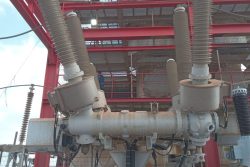When the Senior Minister in the Office of the President with responsibility for Finance, Dr Ashni Singh presents the first full year budget of the new PPP/C administration there will be numerous areas of interest to the public. First and foremost, the country wants to see a clear expression of policy towards the utilisation of rising oil revenues and how this will relate to overall spending and debt contracting.
In the nearly five months that the PPP/C has been in office, there has been a veritable whirlwind of proposed high-ticket expenditure which has not been adequately framed in the hastily knocked together budget for this year. The budget for 2021 will be different. The public wants to see fiscal responsibility, prudence and a tilt towards balanced budgeting. One of the early curses of oil wealth to emerging petroleum producing countries is runaway expenditure and spending without a plan to reorient the economy towards non-hydrocarbon sectors that will yield sustainable and higher-paying jobs where the people of the country can see improvement in their living circumstances.
The embodiment of this fiscal responsibility and policy lies in the Natural Resource Fund Act which had been passed by the defeated APNU+AFC administration in January of 2019 and was immediately repudiated by the then opposition PPP/C. It is baffling why President Ali has not moved swiftly to either have this act amended or repealed and replaced. Ideally this law should be fully operational before the presentation of the 2021 budget.
How the fiscal policy and use of oil revenues relates to the beleaguered sugar industry will be of considerable interest to the public. The PPP/C made an expansive pledge to reopen the shuttered sugar estates namely Rose Hall, Skeldon and East Demerara. How that pledge will be costed and whether it is grounded in reality will hopefully be made clear in the upcoming budget.
The financial status of the industry remains dire notwithstanding the closure of four estates and it is unclear where relief will come from and if there is a serious plan to propel it towards various value- added possibilities.
The utility of an active Parliament was immediately demonstrated last week when it finally met after nearly three months. Minister of Agriculture Zulfikar Mustapha provided answers on the sugar industry to questions from APNU+AFC MP Jermaine Figueira.
As of August 31, 2020 the total indebtedness of the Guyana Sugar Corporation (GuySuCo) was $72.5b.
.
To the question from MP Figueira of how much direct assistance had been provided to the corporation over the last ten years ending in August 2020, Mr Mustapha said the figure was $20b for 2010 to 2014 but he was unable to say what the figure was for 2015 to July, 2020.
As to the question of the cost in US$ for GuySuCo to produce a tonne of sugar for each year between 2010 and 2020, Mustapha listed the average cost per metric tonne annually for the last 10 years as US$747.38.
This figure would translate into 33 US cents per pound of sugar. The world market price for sugar currently hovers between US 14 cents and 18 cents per pound, underlying that Guyana remains a high cost producer of sugar.
While Guyana is producing sugar at US$747.38 per tonne, it has not received a price higher than this in any market in which it has sold.
Minister Mustapha listed the price per tonne received from the following markets as follows: European Union (US$445.23), US (US$593.05), CARICOM (US$581.30), regional non-CARICOM states (US$741.04), Australia (US$623.90), Italy (US$488.27), the Middle East (US$708.24), UK (US$540.05).
On the question of what percentage of GuySuCo’s income was taken up by the employment cost and debt servicing in the period 2010 to 2020, Mr Mustapha said the employment cost took 71% and debt servicing 2.5%.
The Minister contended in his answer that the cost of production of sugar must take account of contributions that the corporation makes in relation to drainage and irrigation for surrounding communities, rice and other crops as well as residential areas. GuySuCo’s accounts are significantly in arrears and it would be exceedingly useful for a disaggregation of expenditure in areas such as drainage and irrigation.
While the corporation has to be seen as a public good and has played a historic role in maintaining the integrity of drainage and irrigation structures, this has to be carefully analysed in relation to the heightened mandate of the National Drainage and Irrigation Authority.
While the APNU+AFC administration unthinkingly and callously gutted the sugar industry sending roughly 7,000 workers on the breadline, a measure of reality has to underpin the PPP/C’s approach. The three operational estates continue to struggle to meet production targets and factory downtime has been deeply troubling. The cost of production also remains high. The reopening costs for three estates and their gradual restart will be stratospheric and there is still no clear way ahead for cultivation at Skeldon as the blighted CNTIC-built factory remains a non-starter.
One awaits with abiding interest to see how the government addresses the sugar industry in the upcoming budget.






